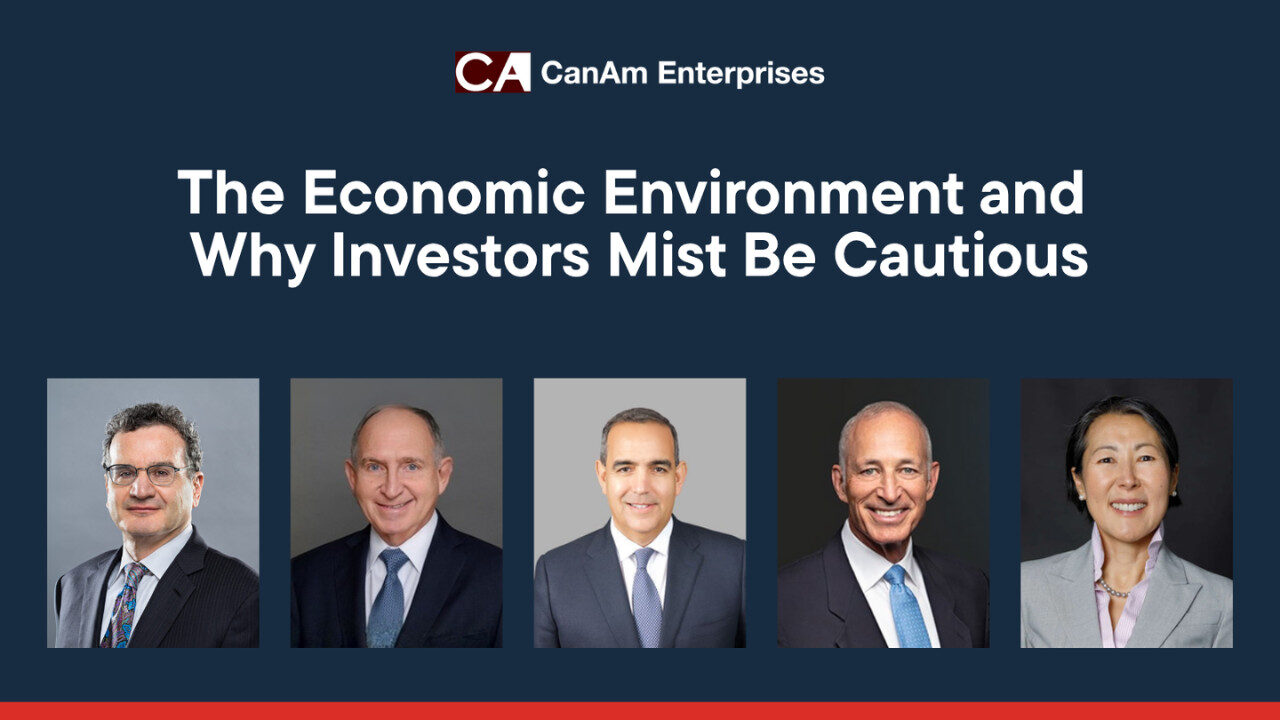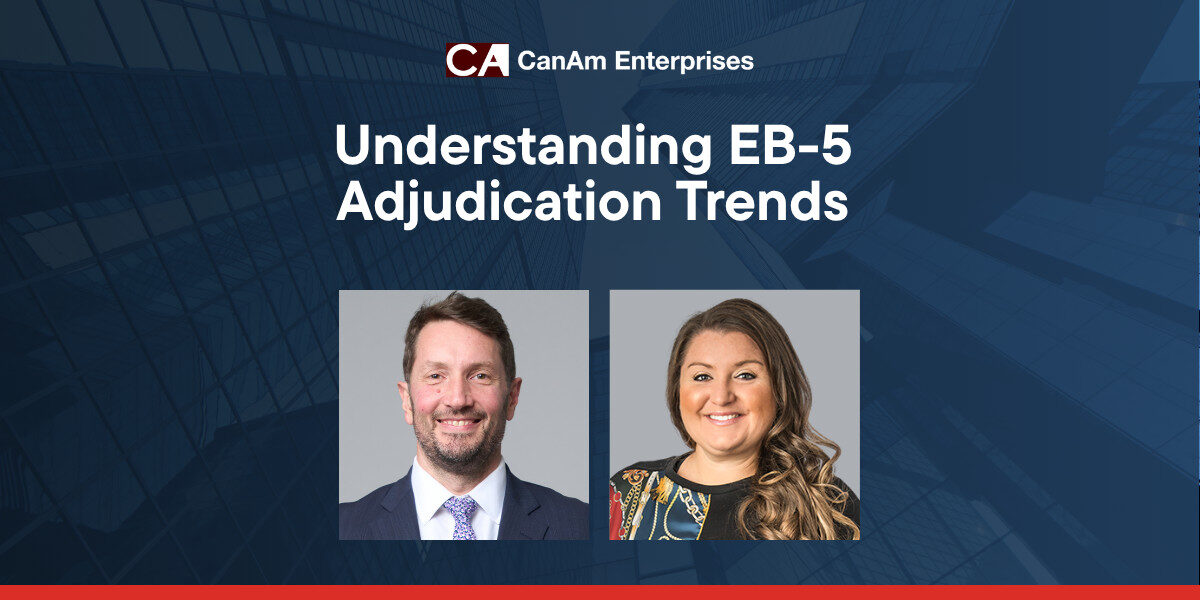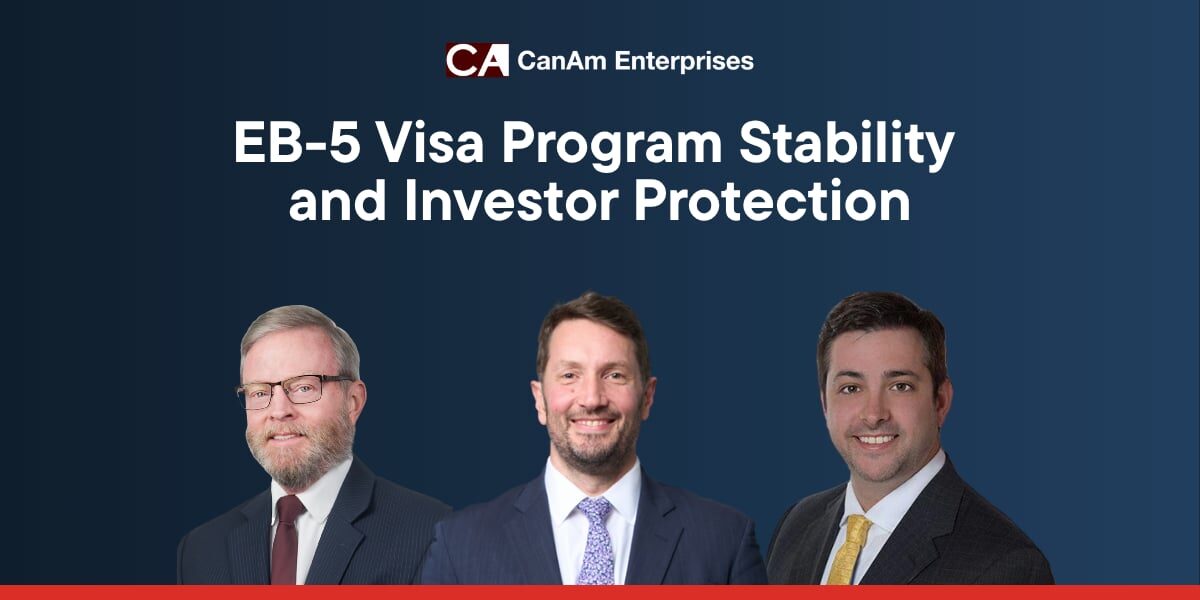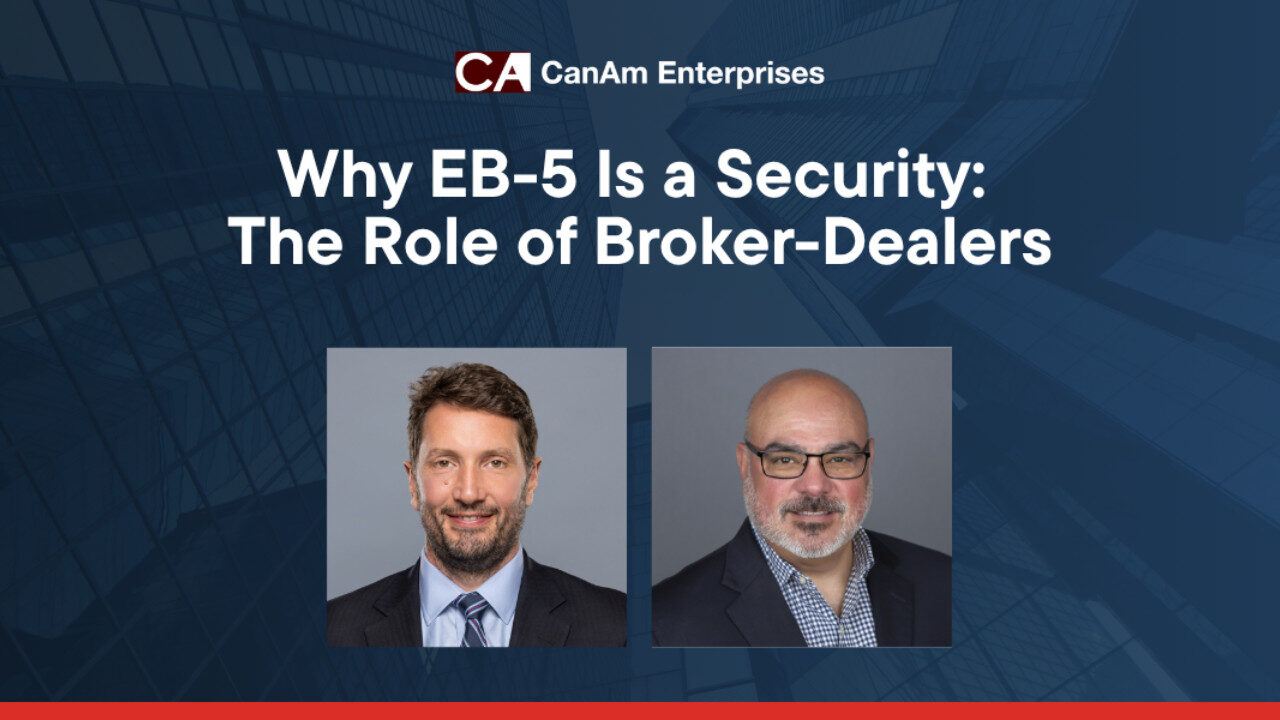Across the financial world, headlines are sounding notes of unease. Credit markets are tightening, interest rates remain stubbornly high, and the ripple effects of global uncertainty—from trade tensions to shifting fiscal policy—are creating a more complex environment for investors to navigate. In recent weeks alone, analysts have warned of “warning signs flashing in the credit markets” as refinancing becomes harder to secure and liquidity in certain segments of the economy dries up.
In this climate, investors are understandably anxious. For EB-5 participants, whose investments are inherently long-term and tied to real-world development, these market conditions heighten the importance of caution, discipline, and transparency. As CanAm Enterprises President and CEO Tom Rosenfeld explained in a recent webinar, “This isn’t a time not to do deals—it’s a time to be cautious and realistic.”
A Market That Feels Uncomfortably Familiar
Tom likens today’s environment to the post-crisis years of 2008–2009—not as severe, but close enough to warrant vigilance. Inflation, rising borrowing costs, and a broad shortage of liquidity are combining to create what he describes as “a much tougher environment to get capital.”
“Over the past 10 years, we’ve gotten used to a very different financing world,” he notes. “Capital was abundant, interest rates were historically low, and projects that wouldn’t have worked in other environments could get done. That’s no longer the case.”
Today, projects that were once expected to return capital are being extended or restructured. Developers who relied on cheap debt are now facing significantly higher refinancing costs. In many cases, they’re turning to alternative sources of funding—including EB-5—to fill the gaps left by banks and private lenders.
According to Tom, that shift presents both opportunity and risk. “We’re seeing a huge demand for EB-5 capital right now, because it’s one of the few remaining sources of patient capital in a market that’s short on liquidity,” he says. “But investors have to be aware that sponsors are leaning on EB-5 more heavily than before—and that increases the importance of evaluating every deal with a critical eye.”
Liquidity Is Tight—and That Changes Everything
To understand why liquidity matters, consider how most large-scale projects are financed. Developers typically combine several sources of capital: senior loans from banks, mezzanine debt, and equity from sponsors or outside investors. Each of these participants expects to get paid back on a timeline that depends on the project reaching key milestones or refinancing at maturity.
But when credit tightens, the chain breaks. “A lot of private equity funds and lenders who expected to exit or roll capital into new projects can’t,” Tom explains. “They’re sitting on assets that aren’t selling or can’t be refinanced under current rates. That liquidity normally recycles back into the market—but right now, it’s frozen.”
Recent analyses from financial institutions echo this. Bloomberg and the Wall Street Journal have reported that roughly a trillion dollars of commercial real-estate debt is approaching maturity over the next 18 months, with refinancing options limited. Deals are being renegotiated mid-stream; valuations are falling; and investors are pausing, unsure of what the next quarter might bring.
That uncertainty, Tom warns, can create pressure for EB-5 regional centers and investors alike to move too quickly into new projects simply because they are available. “We’ve seen more delays, more deals being re-traded, and more equity backing out than I’ve ever seen before,” he says. “That’s why you have to slow down and make sure all the pieces are really in place.”
Caution Is Not Inactivity
Despite the difficult environment, Tom emphasizes that this is not the time to retreat from the market entirely. Rather, it is the moment to double down on quality and process discipline.
“Good deals are still out there,” he says, “but they take longer to find, and you have to make sure every element—sponsor, equity, guarantees, feasibility—checks out. We’re having a tough time finding deals we’re comfortable with, and that’s okay. I’d rather lose a deal than lose an investor’s money.”
At CanAm, that approach translates into several key safeguards:
- Strong Sponsors with Skin in the Game. “The sponsor has to have meaningful equity—25% to 30%—and a proven track record,” Tom notes. “That’s non-negotiable.”
- Projects That Make Economic Sense on Their Own. “EB-5 should not be the sole reason a project exists. If a project only works because EB-5 money is available, that’s a red flag.”
- Completion Guarantees and Capital Stack Verification. “We verify that all layers of the capital stack are real and funded before committing. If equity drops out or terms change, we’ll delay or walk away.”
- Independent Market and Feasibility Studies. “Especially in rural projects, where we don’t know the local economy as well, we bring in third-party specialists to analyze demand and risk.”
- Conservative Assumptions. “Every projection looks good on paper,” Tom says. “But rents, lease-ups, and cap rates rarely perform exactly as forecast. You have to run sensitivity analyses to understand what happens if things go sideways.”
Rural Projects: Opportunity with Elevated Risk
One of the most important takeaways from Tom’s remarks is that while rural projects currently offer faster processing and visa availability under the EB-5 Reform and Integrity Act, they also tend to carry greater execution risk.
“Investors are drawn to rural projects for priority processing,” he acknowledges, “but they have to recognize that rural markets are smaller, less diversified, and more vulnerable to single-employer or single-industry shocks. These projects can absolutely succeed, but the margin for error is thinner.”
CanAm’s approach, he explains, is to mitigate that risk through diversification within the project type and by partnering with established operators and public-sector programs that provide additional funding support. “We’re pursuing broadband and infrastructure-related projects where the underlying economics aren’t tied to a single business model,” Tom says. “That’s how you bring down risk while meeting the job-creation intent of the program.”
The Bigger Picture: Investor Protection in a Shifting Market
In uncertain times, investors tend to look for stability and trustworthy leadership. That’s particularly true in EB-5, where capital is committed for multiple years and success depends on both the financial performance of a project and the compliance integrity of the regional center managing it.
“Everyone says they’re great,” Tom cautions. “But this is when experience matters most. You want to work with people who have been through multiple market cycles and understand how to protect investors when conditions change.”
He points out that the same market stress now driving borrowers toward EB-5 capital also increases the importance of conservative underwriting and ongoing monitoring. “EB-5 is becoming a more essential piece of project financing, but that doesn’t mean it should be the riskiest piece,” he says. “Our job is to make sure it isn’t.”
The Takeaway: Steady Hands in Unsteady Times
As the conversation closed, Tom returned to the broader message that frames the entire webinar series: investors should see the current environment as a test of judgment.
“When the market’s this volatile, it’s tempting to chase momentum or believe every projection,” he said. “But the fundamentals still matter—capital structure, sponsor commitment, job creation, and the likelihood of repayment. Those are the things that protect investors, and they don’t change just because the economy does.”
For EB-5 investors weighing their options in late 2025, the lesson is clear. Market turbulence does not mean opportunity disappears; it means discernment matters more than ever. By focusing on quality over quantity and by working with experienced regional centers that prioritize investor protection over transaction volume, EB-5 participants can navigate today’s uncertainty with confidence.





